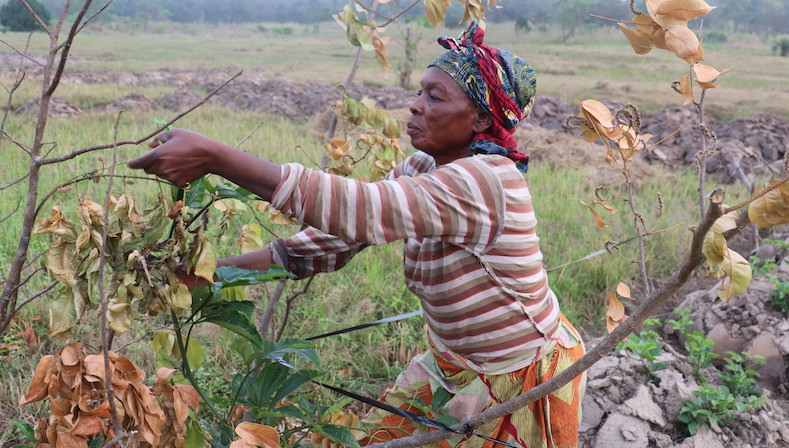Shielding crops during specific seasons, such as the challenging harmattan period, demands tailored strategies for farmers. In this article, we delve into key measures that farmers can implement to protect their crops against the adverse effects of the harmattan season.
Read more about Agriculture
-
Weather Monitoring and Preparedness
- Utilize Weather Forecast Services: Stay abreast of harmattan conditions through weather forecast services. This allows farmers to anticipate dry and dusty weather patterns and plan accordingly.
- Invest in Protective Structures: Shield crops from harmattan’s harsh effects by employing protective structures like tunnels or netting. These structures help mitigate the impact of dry winds and reduce the risk of damage.
-
Crop Rotation and Diversification
- Rotate Crops: Implement a thoughtful crop rotation strategy to combat harmattan-induced soil desiccation. Alternating crops helps maintain soil fertility and moisture levels.
- Diversify Crops: Planting a variety of crops during harmattan offers protection against specific vulnerabilities. Diversification acts as a natural defence mechanism, enhancing the overall resilience of the farming system.
-
Integrated Pest Management (IPM)
- Implement Biological Controls: Introduce natural predators to control pests, as harmattan conditions may exacerbate pest-related challenges. Biological controls reduce reliance on chemical interventions.
- Regular Monitoring: Given the heightened risk of pests during dry conditions, regular monitoring becomes crucial. Early detection enables prompt and targeted intervention against potential harmattan-induced pest infestations.
-
Proper Irrigation Practices
- Efficient Water Management: With harmattan causing dry and windy conditions, efficient water management becomes paramount. Employ appropriate irrigation methods to prevent water stress in crops.
- Drip Irrigation: Consider drip irrigation to deliver water directly to the root zone, minimizing water loss to evaporation. This practice ensures crops receive sufficient moisture despite harmattan-induced dryness.
Sign up for the Connect Nigeria daily newsletter
-
Soil Health Management
- Regular Soil Testing: Conduct frequent soil tests to assess nutrient levels and adjust soil amendments. Maintaining optimal soil health is vital during harmattan to counteract soil dryness.
- Cover Cropping: Integrate cover crops to protect against soil erosion and enhance soil fertility during harmattan. Cover crops act as a natural barrier against the adverse effects of dry and windy conditions.
-
Appropriate Fertilization
- Balanced Fertilization: Provide crops with balanced nutrients to fortify them against harmattan stress. Avoid over-fertilization, which can exacerbate challenges related to nutrient imbalances.
-
Early Planting and Timely Harvest
- Early Planting: Capitalize on favourable conditions before harmattan fully sets in by planting crops early. This ensures crops establish strong root systems before facing the dry and dusty harmattan winds.
- Timely Harvest: Harvest crops at the right maturity to prevent harmattan-related losses due to desiccation or exposure to dusty conditions.
-
Protective Pest Management
- Use Resistant Varieties: Select crop varieties that exhibit resilience to harmattan conditions. Resistant varieties act as a proactive defence against harmattan-induced stress.
- Natural Repellents: Explore natural repellents, such as companion planting or repellent crops, to deter pests exacerbated by harmattan. This approach minimizes the need for chemical interventions.
Register to attend the CN Business Mixer
Conclusion
By tailoring strategies to the unique challenges posed by harmattan, farmers can fortify their crops against dry and dusty conditions. These measures not only protect agricultural yields during this season but also contribute to building a more resilient and sustainable farming community. As the harmattan sweeps in, implementing these practices will empower farmers to navigate the season successfully, fostering a thriving agricultural landscape.
Featured Image Source: Climate Home News
Got a suggestion? Contact us: [email protected]


